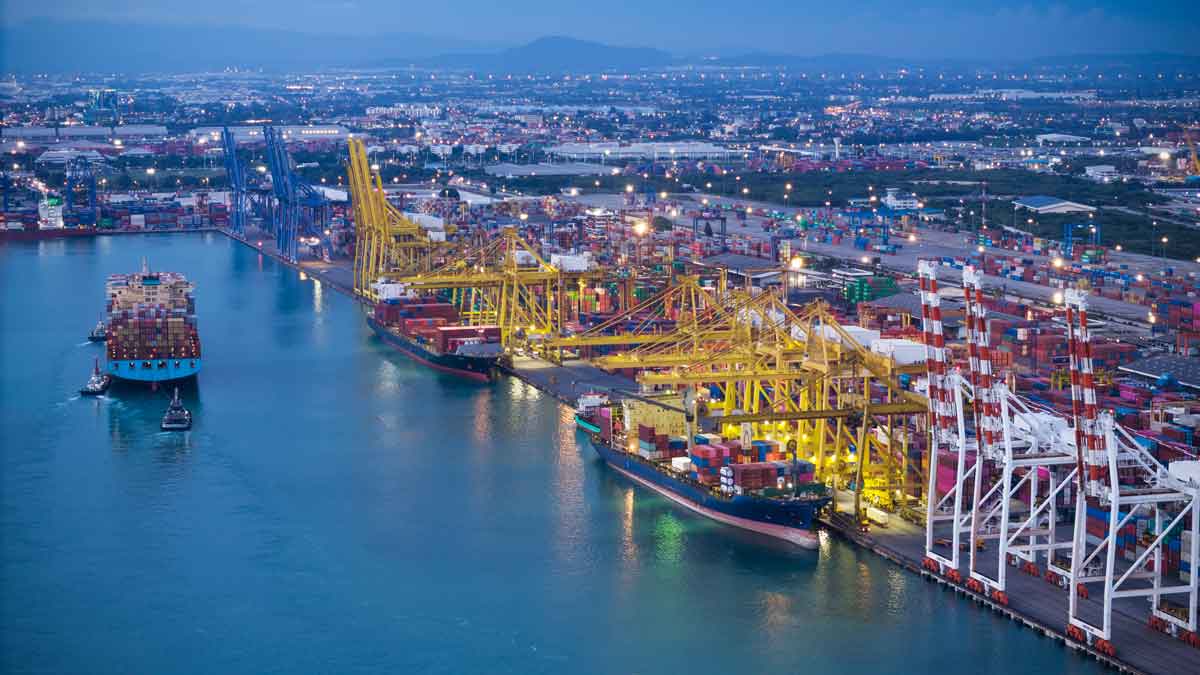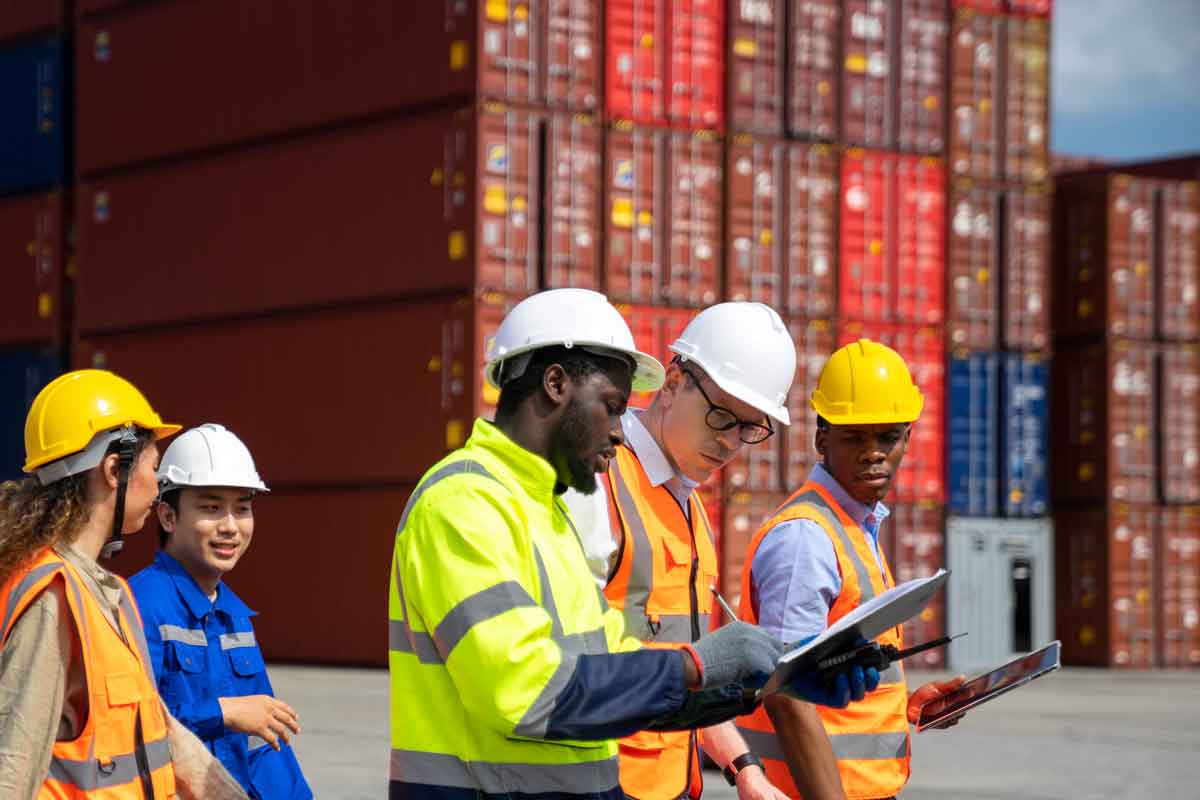
Freight delays refer to the postponements or interruptions in the scheduled cargo movement through the supply chain, from the time it arrives at a terminal to the time it departs for its next destination. These delays can disrupt the entire logistics chain, leading to increased costs, missed delivery windows, and customer dissatisfaction.
To effectively mitigate freight delays, terminal operators need to implement a variety of strategies targeting each of the identified challenges.
In this guide, we’ll provide some common causes of freight delays that may help you diagnose the issues at your terminal. Then, we’ll give you some solutions that can help alleviate these delays and improve your terminal’s efficiency.
Common Causes of Freight Delays
There are many potential causes of freight delays. We’ll name a few here so that you can have an idea of where to look to diagnose your specific problems:
Infrastructure Issues
If your terminal’s infrastructure is outdated or insufficient to handle the current volume of traffic, it can cause significant freight delays. This might include limited berths, inadequate storage space, or insufficient equipment.
Freight delays can also result from unplanned maintenance or breakdowns of critical equipment, such as cranes, or UTRs, which are vital for efficient cargo handling.
Operational Challenges
Operational challenges are generally top-down issues. Examples include:
- Inefficient Workflows: Poorly planned workflows, such as inefficient yard management, can lead to increased handling times and freight delays.
- Technology Failures: Reliance on unreliable software systems can lead to delays in processing cargo. For example, a glitch in the terminal operating system (TOS) could result in incorrect container placements.
Global Trade Fluctuations
The complexity of global trade makes it very difficult to predict. Factors like these can cause freight delays at your terminal:
- Sudden Surges in Demand: Unpredictable spikes in demand, such as those caused by seasonal peaks or global events, can overwhelm terminal capacity and lead to significant freight delays.
- Political and Economic Factors: Trade wars, tariffs, and other geopolitical events can disrupt the flow of goods, causing freight delays as cargo is rerouted or held up.
External Factors
These factors may not be in your control, but it’s important to be aware of how they can cause freight delays:
- Weather Conditions: Severe weather can halt terminal operations entirely. Even after the weather clears, a backlog of vessels waiting to berth might prolong freight delays.
- Traffic Congestion: Congestion on access roads leading to and from the terminal can cause freight delays. Similarly, congestion within the terminal itself can lead to long wait times for loading and unloading.
- Regulatory Changes: Changes in regulations can slow down cargo processing. For instance, increased scrutiny of certain types of cargo might lead to longer inspection times, causing freight delays.
- Supply Chain Disruptions: External supply chain issues, such as disruptions at origin ports, delays in intermodal connections, or container shortages, can contribute to freight delays at your terminal.
Strategies for Terminal Operators to Cope with Freight Delays
 As with most investments for marine and rail terminals, efficiency is the ultimate goal. Each of these solutions targets a different aspect of your terminal operations. They’re all designed to help you maximize efficiency and either cope with or completely eliminate freight delays.
As with most investments for marine and rail terminals, efficiency is the ultimate goal. Each of these solutions targets a different aspect of your terminal operations. They’re all designed to help you maximize efficiency and either cope with or completely eliminate freight delays.
Upgrading Infrastructure
When it comes to infrastructure investments, we recommend prioritizing upgrades that deliver immediate efficiency gains.
- Regularly upgrade terminal infrastructure to handle current and future traffic volumes, focusing on expanding critical areas like berths and storage.
- Implement a preventive maintenance program to keep equipment in optimal condition, reducing unexpected breakdowns.
- Use advanced capacity management tools to forecast and mitigate bottlenecks.
Eliminating Operational Challenges
Start with a comprehensive review of your policies, processes, training, and employee skill sets. Once you know your shortcomings, you can:
- Invest in workforce training to boost productivity and reduce delays.
- Streamline workflows by optimizing yard management and container handling processes.
- Upgrade your Terminal Operating System (TOS) to optimize and scale operations.
Mitigating External Factors
External factors may be mostly out of your control, but that’s all the more reason to anticipate and prepare for them.
- Develop weather preparedness plans and establish quick recovery protocols to minimize delays from severe weather.
- Collaborate with local authorities to improve traffic flow to and from the terminal and manage traffic in the yard efficiently.
- Stay proactive with regulatory compliance by monitoring changes and adapting processes quickly.
- Use flexible procedures that can be adjusted as regulations evolve.
Reacting to Global Trade Fluctuations
As demand ebbs and flows, your terminal will need to rapidly adjust to match the pace. These solutions will help you stay flexible and resilient as the marketplace fluctuates:
- Focus on scalable operations that can quickly adapt to sudden surges in demand, using temporary resources when needed.
- Leverage data and visibility to respond effectively and inform decision-making, such as real-time inventory systems and data analytics.
- Implement a robust crisis management plan to handle security threats without disrupting operations.
Regardless of which area you focus on, it’s best to choose solutions that are immediately actionable and likely to improve overall resilience.
Minimize Freight Delays with Tideworks Software Solutions
Though not every cause of freight delays will be within your control, that’s just more reason to seek out and correct what you can. Once you’ve identified what could be causing your freight delays, a combination of upgrades to infrastructure, technology, policies, employees, and procedures will help you fix them.
If you’re interested in how software can help you alleviate challenges caused by freight delays and improve efficiency, Tideworks has the answers.
- Traffic Control is a next-generation equipment control system that optimizes equipment usage, enabling terminals to prioritize critical moves and manage inventory, to keep operations on track and quickly adapt to delays.
- Spinnaker is a graphical planning tool that leverages automation and real-time planning, to help terminals optimize space utilization , increase cargo throughput, and streamline container handling to maximize efficiency.
- Data Platform is a terminal data management solution that provides transparency and visibility across terminal operations, empowering terminal operators to make timely and informed operational decisions.
Learn more about how our terminal operating systems solutions can help solve interruptions and freight delays at your terminal. Contact us today.
